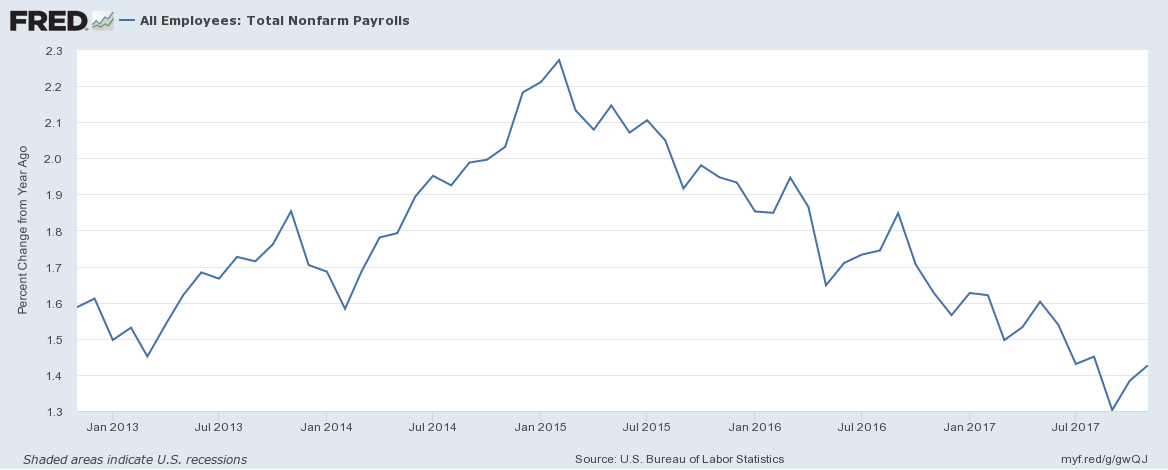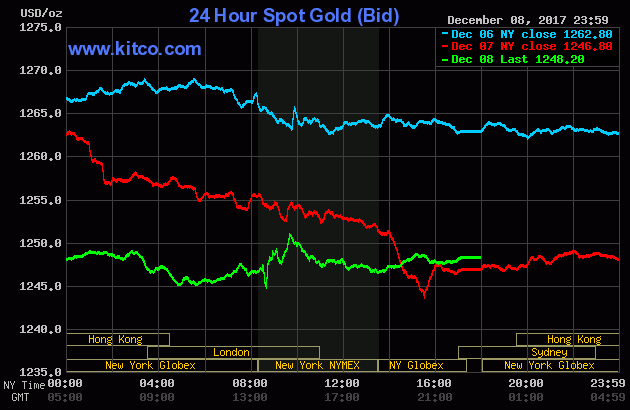The U.S. economy added 228,000 jobs in November. What does it mean for the gold market?
November Payrolls Beat Expectations
Total nonfarm payroll employment increased 228,000 in November. The rise followed an increase of 244,000 in September (after a downward revision), according to the U.S. Bureau of Labor Statistics. Hence, there was a small slowdown. However, the headline number surprised positively, as the markets expected only 190,000 job gains in the previous month. Thus, the report is positive news for the U.S. labor market and negative for the gold market. Moreover, employment gains in September and October combined were 3,000 higher than previously reported. It means that job gains in the last three months have averaged 170,000, more than what is needed to keep up with the growth of population. The employment gains were widespread again, but the biggest employers were education and health services (+54,000), and professional and business services (+46,000).
When it comes to the medium term, the annual job growth rate remains in a downward trend. However, since disappointing September, the annual job growth rate rebounded, as the chart below shows.
Chart 1: Total nonfarm payrolls (change, thousands of persons) over the last five years.

Other Labor Market Indicators
Other labor market indicators were mixed. The unemployment rate was unchanged at 4.1 percent. Similarly, the labor force participation rate remained at 62.7. Meanwhile, the employment-population rate declined from 60.2 percent to 60.1 percent. It means that the U.S. economy added jobs, but neither unemployment rate, nor the labor force participation rate changed. It’s a bit strange. On the other hand, the average hourly earnings for all employees on private nonfarm payrolls rose by 5 cents. It means that the annual wage inflation was 2.5 percent. Historically speaking, the wage inflation is still subdued.
Payrolls, Fed and Gold
The November U.S. nonfarm payrolls were better than expected. The report points generally to a tight labor market and to strong year-end momentum for the economy. Although the strong job growth lifted the U.S. dollar and stock markets, the price of gold did not plunge. Actually, it ended a trading session with a small gain, as the chart below shows.
Chart 2: Gold prices from November 6 to November 8, 2017.

However, the impact of the report should be negative for the gold market in the medium term. The reason is that the solid job gains will support a hawkish camp within the FOMC. The interest rate hike in the upcoming meeting is now even more than certain. Additionally, strong job gains and record low unemployment rate may prompt the Fed officials to formulate a more hawkish outlook about the U.S. economy in the next year and to adopt a more aggressive stance. The tax reform could also encourage the FOMC members to hike more times in 2018 than previously expected. If that scenario realizes, the December FOMC meeting will be negative for the gold prices. In 2015 and 2017, the price of gold rose after the hikes, but this was because the interest rate hikes were accompanied with the softer interest rate path. This time may be different, although the inflation is still subdued. Stay tuned!
If you enjoyed the above analysis, we invite you to check out our other services. We focus on fundamental analysis in our monthly Market Overview reports and we provide daily Gold & Silver Trading Alerts with clear buy and sell signals. If you’re not ready to subscribe yet and are not on our gold mailing list yet, we urge you to sign up. It’s free and if you don’t like it, you can easily unsubscribe. Sign up today.
Disclaimer: Please note that the aim of the above analysis is to discuss the likely long-term impact of the featured phenomenon on the price of gold and this analysis does not indicate (nor does it aim to do so) whether gold is likely to move higher or lower in the short- or medium term. In order to determine the latter, many additional factors need to be considered (i.e. sentiment, chart patterns, cycles, indicators, ratios, self-similar patterns and more) and we are taking them into account (and discussing the short- and medium-term outlook) in our trading alerts.
Thank you.
Arkadiusz Sieron, Ph.D.
Sunshine Profits‘ Gold News Monitor and Market Overview Editor
Gold News Monitor
Gold Trading Alerts
Gold Market Overview


